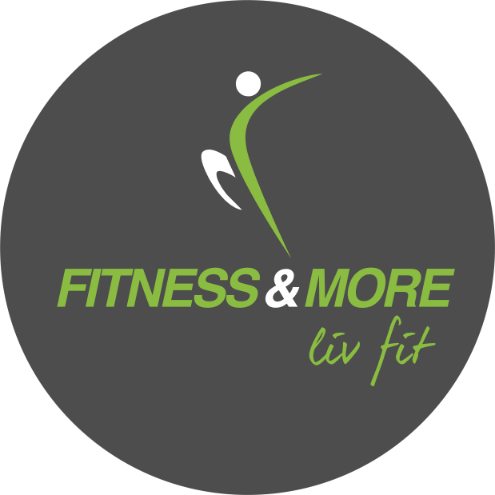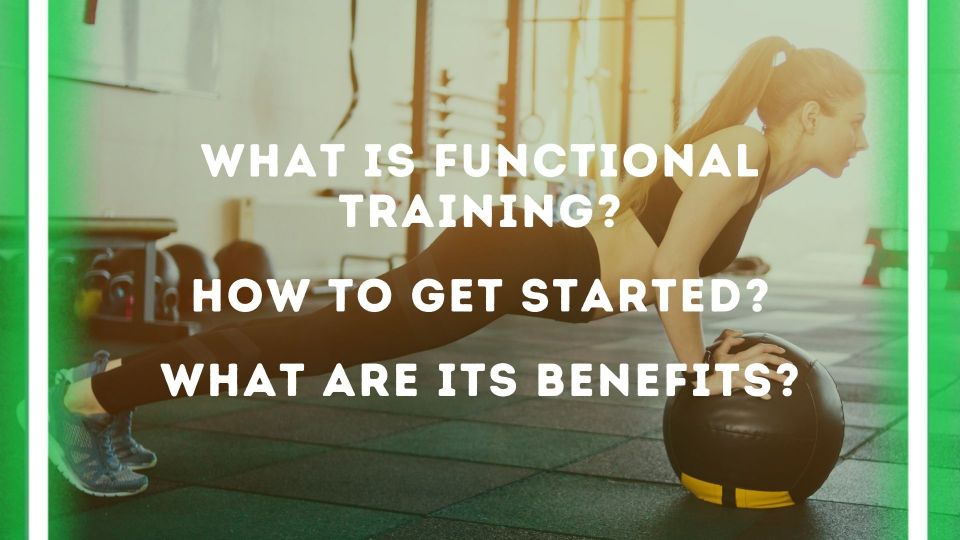Fitness trends come and go but functional fitness is one that gets quite a bit of attention and it doesn’t appear to be going anywhere anytime soon. Even though functional fitness has become a new buzzword, it is extremely beneficial to your daily life when properly integrated into your workout routine. Let’s dig more into what functional strength training is, the benefits, what are the basic movements and how to incorporate it into your fitness routine.
What is Functional Fitness Training?
The word function means purpose, and therefore functional fitness training is training for a specific purpose. That purpose is to build more strength, balance, and stability to enable us to perform everyday activities with greater ease and efficiency.
With functional fitness training, you enhance your body’s abilities to perform the things you do in life or in sports. How does it do this? Basically, its exercises and routines simulate everyday movements (for instance, standing up from a chair or bending down to pick up something from the floor) by stimulating and exercising all the muscles involved in those simple movements (as opposed to normal movement or exercise, which usually only uses one or a few muscles). This sort of training helps you perform the simple tasks of life in a much easier manner, while also boosting your core strength. Fitness balls, kettlebells, and weights are some of the tools used in functional fitness training.
Functional fitness training provides you with the strength, stability, and mobility you need to thrive in your life and sports. You use basic functional fitness movement patterns like pushing, pulling, hinging, squatting, rotating, carrying and gait patterns—walking and running—every day. Functional fitness training utilizes exercises that improve your movement proficiency in these primary patterns to give you an edge so you can achieve your goals safely and with good health.
How to Get Started – Basic Functional Exercises?
Functional Fitness Training involves a variety of exercises which target different muscle groups. Most of these exercises do not require any equipment since they depend on body weight to create resistance. There are some exercises which involve the use of equipment.
Before you get yourself in the functional training mode, I would really recommend that you take assistance from a trained instructor and follow a proper warm and stretching routine pre and post-workout to prevent the risk of injuries.
Here are some of the basic exercises which can be included in your functional training routine:
Push-ups
Get on the floor with your stomach facing down, positioning your hands slightly wider than your shoulders. Don’t lock out the elbows; keep them slightly bent.
- Extend your legs back so you are balanced on your hands and toes, your feet hip-width apart.
- Contract your abs and tighten your core by pulling your belly button toward your spine.
- Inhale as you slowly bend your elbows and lower yourself to the floor, until your elbows are at a 90-degree angle.
- Exhale while contracting your chest muscles and pushing back up through your hands, returning to the start position.
Dumbbell Squats
Stand with your feet about shoulder-width apart. You can turn your toes slightly out or point them straight ahead.
- Hold dumbbells at your sides, palms facing in.
- Fill your chest with air to set your core. Maintain a tight, vertical torso throughout the movement with a natural arch in your low back.
- Push your hips back and bend your knees to lower down until your thighs are parallel to the floor. Keep your chest up and your weight in your heels.
- Push your feet into the ground to stand back up.
Forward Lunges
Start in a standing position with your feet hip-width apart.
- Step forward longer than a walking stride so one leg is ahead of your torso and the other is behind. Your foot should land flat and remain flat while it’s on the ground. Your rear heel will rise off of the ground.
- Bend your knees to approximately 90 degrees as you lower yourself. Remember to keep your trunk upright and core engaged.
- Then, forcefully push off from your front leg to return to the starting position and repeat the steps with the other leg.
Plank
Select a position where you can extend your whole body length. Using an exercise mat will give you enough padding to be comfortable on all fours. You can choose whether to perform a plank on your palms or your forearms.
- Begin in the plank position, face down with your forearms and toes on the floor. Your elbows are directly under your shoulders and your forearms are facing forward. Your head is relaxed and you should be looking at the floor.
- Engage your abdominal muscles, drawing your navel toward your spine. Keep your torso straight and rigid and your body in a straight line from your ears to your toes with no sagging or bending. This is the neutral spine position. Ensure your shoulders are down, not creeping up toward your ears. Your heels should be over the balls of your feet.
- Hold this position for 10 seconds. Release to the floor.
- Overtime work up to 30, 45, or 60 seconds.
Deadlifts
Select a barbell of lightweight, to begin with.
- Position the feet shoulder-width apart (or not much more) with toes under the bar. The feet point straight ahead or they can angle out slightly. Heels should stay flat on the surface. Stabilize the abdominal muscles by bracing them.
- Squat down, bending at the knees. Grasp the bar just outside the line of the knees with an overhand or mixed grip.
- Lift the bar by pushing upward with the legs from the knees. Breathe out on exertion. The bar should almost graze the shins and come to rest around thigh level as you reach full height. Pull the shoulders back as much as possible without bending backwards.
- Lower the bar to the floor with a reverse motion ensuring a straight back again.
- Repeat for your desired number of repetitions.
Functional fitness training can be as simple as incorporating some functional strength exercises into your workout routine. It can be even easier when you have someone guiding you, especially if you’re not familiar with the exercises. During all of your workouts, form is imperative, but functional fitness requires a level of body awareness you may not be able to attain on your own.
If you want some guidance, connect with the amazing team at Fitness & More Gurgaon. We have a team of qualified trainers and a total body functional workout that builds strength, burns fat, improves coordination and mobility, and will have you feeling amazing from the inside out!
Benefits of Functional Training Exercises
Functional Training Helps Build Strength and Stability
Squats and deadlifts are compound movements that need multiple muscle groups and joints to help build more functional strength. While these movements target the hamstrings, glutes, and quadriceps, they require a combination of core strength, stability, and upper body strength, similar to everyday movements. Your body will work as a whole by incorporating functional movements rather than being isolated to maximize performance.
Functional Training Helps Reduce Any Risk Of Injury
When you train for a purpose, you also reduce your risk for injury. Suppose you are picking up a heavy furniture piece. When you lift up something from the ground without using your legs in a squat or deadlift, you might bend over and strain your lower back muscles. Improper lifting can also lead to more severe and serious injuries, such as disc herniation, which can require surgical intervention and cause chronic lower back pain. By recruiting more muscle groups and stabilizing muscles, functional training helps you prepare for real-life situations by strengthening your core and improving your mobility.
Functional Training Helps Improve Mobility
Ever heard of this phrase – ‘If you don’t move it, you will lose it’. Mobility is crucial, especially as we age. Functional movements help you strengthen your body as a collective unit, which will improve stability, posture, and balance. Isolated movements such as leg extensions, only work the quadricep, which in real life, rarely ever happens. As you walk, squat, or run, you engage multiple muscle groups, including your glutes, hamstrings, and core. When squatting and deadlifting, you put your body into a position that utilizes your joints, stabilizing muscles, and core muscles, improving your overall functionality.
Functional Training Helps Improve Postural Imbalances
Our bodies develop muscle and postural imbalances throughout life. Some lifestyle factors can create imbalances in our bodies, such as sleeping on one side, working at a desk in a certain position, and carrying your bag on your preferred shoulder. They can also occur from rehabbing old injuries, poor exercise form, and only using weight machines, with no exercise variability.
Functional Training consists of compound movements which require our body parts to work in sync with each other. It is so crucial to improving posture and muscular imbalances.
Functional Training Promotes More Fat Burn
Functional training allows our body to burn more calories since it involves working multiple parts of the body at the same time, hence promoting overall weight loss.
Tips for Functional Training
Follow these tips to get the most out of your workout and also you can keep your training safe and effective:
- Be sure to pay attention to your form, particularly when it comes to the core (primarily the abdomen and hips) and shoulders. Improper form can increase the risk of injury and slower gains.
- Begin your routine by warming up for 5-10 minutes and end by cooling down for another 5-10 minutes.
- Focus on your breathing.
- Gradually increase weight or resistance as you move to the intermediate and advanced levels to challenge the muscles.
- Consistency is of utmost importance. Maintain a consistent schedule and routine with rest days in between.


Recent Comments